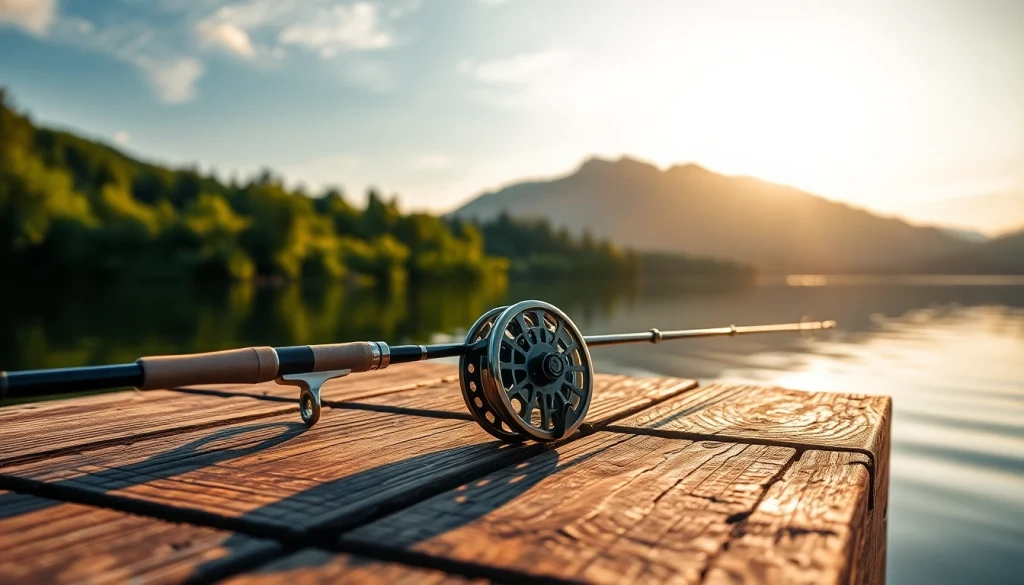
Understanding the Basics of Fly Fishing Combo
What Is a Fly Fishing Combo?
A fly fishing combo refers to a package that consists of a fly rod, reel, and often includes various accessories designed to give anglers everything they need to start their fly fishing journey. These kits are tailor-made for ease of use and convenience, eliminating the requirement of purchasing each component separately. Especially beneficial for beginners, these combos save not only time but also offer great value for money.
The simplicity of a fly fishing combo is particularly appealing. For those new to the sport, navigating the plethora of equipment options can be daunting. With a pre-configured kit, aspiring anglers can focus on learning the art of casting and finding the right spots without being overwhelmed by the technical aspects of the gear. A comprehensive Fly fishing combo can set the stage for a rewarding outdoor experience by providing all the essentials in one go.
Key Components of a Fly Fishing Combo
The essential components of a fly fishing combo include:
- Fly Rod: This is typically made of lightweight materials such as graphite, fiberglass, or bamboo, designed to provide flexibility and strength. The length and action of the rod can vary, affecting casting distance and technique.
- Fly Reel: The reel is where the line is stored and is used to retrieve the fishing line after a catch. Higher-quality reels often feature drag systems to manage the tension when reeling in a fish.
- Fly Line: This specially weighted line facilitates the casting of artificial flies. Its type and weight are matched to both the rod and the weight of the flies being used.
- Leader Line and Tippet: Attached to the end of the fly line, the leader line transitions to a thinner tippet line, which connects to the fly itself. These lines are crucial for stealth when fishing.
- Flies: These are the artificial baits designed to mimic the insects or small fish that the target species feeds on.
- Accessories: A complete combo may also include a fly box, a tool for tying knots, and various styles of floats, weights, and other aids.
Benefits of Using a Combo Instead of Separate Equipment
Purchasing a fly fishing combo offers several tangible benefits:
- Cost-Effective: Buying a combo can be financially advantageous compared to purchasing each item separately, especially for newcomers to the sport.
- Convenience: A complete kit takes the guesswork out of assembling equipment. It ensures that components work well together right from the start.
- Time-Saving: New anglers can immediately hit the water, as all necessary components are included and properly matched for optimal performance.
- Educational Value: Using a fly fishing combo allows beginners to learn which elements work best for their fishing style, fostering better understanding and technique over time.
Types of Fly Fishing Combos Available
Beginner Fly Fishing Combos
Beginner fly fishing combos are generally simpler and easier to use. They typically feature:
- Shorter rods for easier casting.
- Medium action that provides a good balance between flexibility and stiffness.
- User-friendly reels that simplify retrieval.
These kits often include basic fly patterns that mimic local aquatic life, empowering newcomers to start fishing without a steep learning curve.
Intermediate Fly Fishing Combos
Intermediate-level combos are designed for anglers who have grasped the basics and are ready to refine their skills. They often feature:
- Longer and faster action rods that enable more robust casting techniques.
- Higher-quality reels with advanced drag systems for better fish handling.
- A wider range of fly patterns suited for various fishing conditions.
These combos allow anglers to explore new techniques and environments, making them suitable for rivers, lakes, and streams.
Advanced Fly Fishing Combos
Advanced fishing combos cater to seasoned anglers who require high-performance gear. Features often include:
- Specialized rod designs optimized for specific fishing techniques.
- Premium-level reels made from lightweight, durable materials.
- Custom-selected flies for targeting specific species effectively.
These combos are built for serious fishing expeditions, whether in challenging terrains or during various weather conditions.
Factors to Consider When Choosing a Fly Fishing Combo
Budget Considerations
When selecting a fly fishing combo, budget is often a primary consideration. Combos range from budget-friendly options under $100 to high-end selections exceeding $500. Deciding on a comfortable price range is critical, but it’s essential to balance cost with quality. Investing in a higher-quality combo can lead to better performance and durability, ultimately saving money in the long run. Understanding the typical cost for your required components can ensure you make an informed decision aligned with your budget.
Brand Reputation and Quality
The reputation of the brand you choose can significantly influence the quality of a fly fishing combo. Established brands often have a track record for quality and performance, offering warranties that speak to their confidence in durability. Researching user reviews can provide insights into everyday experiences with specific combos, helping you select a reliable option that will enhance your fishing experience.
Specific Fishing Environments
The environment in which you plan to fish is another vital factor. Different waterways may necessitate specialized gear. For instance, a fly fishing combo for stream fishing may need a shorter rod for better control, while lake fishing might require longer rods to cast farther. Knowledge of the local environment and conditions, such as prevalent species and water currents, enables you to select the most suitable gear.
Top Features to Look for in a Fly Fishing Combo
Material and Build Quality
The material and construction of a fly fishing combo can impact its performance and lifespan. High-grade materials, such as graphite and aluminum, offer superior responsiveness and durability while maintaining a lightweight profile, which is essential for longer casting sessions. Aim for combos that have reliable manufacturing processes, as these are likely to perform better over time.
Rod Length and Action Type
When evaluating rod length and action, consider your fishing scenario and personal style. Rod lengths can range from 7 to 10 feet, and each has its advantages regarding casting distance and precision. Action type refers to how much the rod bends when under load. Fast action rods bend mainly near the tip and are ideal for distance casting while medium action rods offer more versatility for various fishing styles.
Included Accessories and Extras
Reviewing what accessories come with a combo can add substantial value. Quality fly boxes, tippet line, and knot-tying tools are common inclusions in many setups. Consider what extras will be beneficial for your fishing style, as these accessories can otherwise add significant cost if purchased separately.
Maintaining Your Fly Fishing Combo for Longevity
Cleansing and Storing Your Equipment
Proper maintenance of your fly fishing combo can significantly unfurl its lifespan. After each fishing trip, rinse the rod and reel with fresh water to remove salt and debris, notably important if fishing in ocean waters. Store the rod vertically to avoid warping, and keep the reel clean, ensuring the drag system operates smoothly. Critical maintenance practices can include periodic lubrication of the reel and checking for any line knots or damage.
Regular Inspection and Repairs
Routine checks on your gear are crucial. Inspect your rod for any signs of cracks or splinters, keep the fly line free of kinks, and watch for wear on the tippet line. Addressing these repairs early can prevent further issues when you’re out on the water. Additionally, replacing worn-out or frayed components ahead of time ensures an optimal fishing experience.
Important Fishing Etiquette and Care Tips
Being a responsible angler not only enhances your experience but also protects the fishing environment. Adhering to local regulations, cleaning up after yourself, and practicing catch-and-release where necessary contributes to sustainable fishing practices. Additionally, understanding the specific needs of the species you target, such as seasonal spawning restrictions, is vital for conservation.



